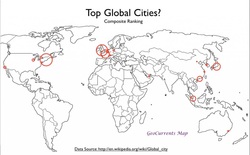 Today we discussed three tiers of World cities. In the first tier you have New York City, London, and Tokyo. These three cities are what we would refer to as "Dominant World Cities". Cities can also be classified as Basic vs. Non-Basic Industries.
1 Comment
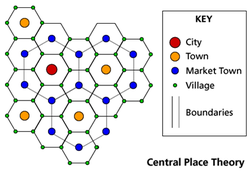 Today we discussed Christaller's CENTRAL PLACE THEORY. Check out this site on his theory that goes more in depth into what we discussed.  Today we discussed the Service sector or the tertiary sector of jobs. Services are slightly different than Industry in how they locate where they are. They generally locate in settlements, within the populated areas (market orientation). This is not always the case though as they must factor in local customs/diversity and their competition. In the past 40 years the service sector has doubled in the number of jobs and has provided nearly all growth in the job market (primary and secondary jobs have remained fairly stagnant). Here is an article about the service sector provided by the World Bank and a separate article by USA Today on the growth of the service sector.  This chapter we talked about secondary sector jobs (the creation of a manufactured good from raw materials). Today during class we looked at the creation of a "global sneaker". Sneakers are created from a variety of materials and it is not just one area of the World that produces the entire product. As time has passed, the creation of a product has become a global endeavor. Check out this website on the creation of the various food products we enjoy on a daily basis and how the products come from all over the world. Also, check out the videos below on the globalization and production of products. You can also read this article on the cost of the ipad 2... what do you think about what it suggests?  Today we discussed Weber's least cost theory and Hotelling's theory of locational Interdependence. Weber's least cost theory tries to explain why an Industry will locate where it does based on three main factors: agglomeration, labor costs, and transportation costs. Ultimately, based on these factors, an Industry will locate in an area where they can maximize their profits. Hotelling's theory of locational interdependence states that an Industry will locate based on where their competition locates. The competition adds economic gains to the area and ensures that each business will most likely improve their products (and ultimately give consumers choices). 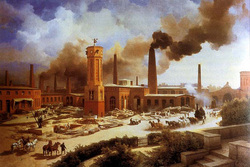 If you were absent due to FCAT remember that you are responsible for all missed work/notes and must maintain the regular pace of the class. As we talked about at the beginning of the year, it is your responsibility to be checking the website when you are absent. Today we discussed section 1 of chapter 11 (Industry). To read additional material on the Industrial revolution you can check look at THIS PAGE. 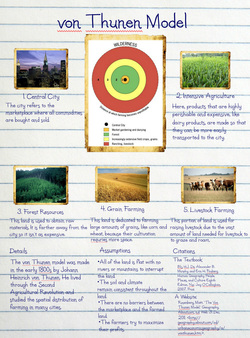 Von Thunen's model attempts to explain where agricultural activities will be located in relation to the market (the city). Read about Von Thunen's model HERE.  Boserup's Theory of population is contrasted with Malthus' Theory. Malthus believes that population growth will be eventually too fast for food production to catch up. Boserup believes that when greater food production is needed, humans will find a way either through intensifying land use or developing new equiptment. Read more about her theory HERE. 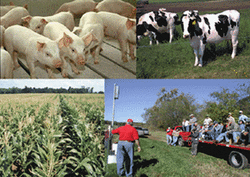 Today we introduced the different types of Commercial farming (farming intended for economic gain). There are 6 main types of Commercial farming (mixed crop and livestock farms, dairy farms, grain farms, livestock ranching, mediterranean agriculture, commercial gardening and fruit farms, and plantation farms. Most commercial farms are usually found in MDCs but plantation farms are usually found in LDC (but are owned by companies from MDCs). Today we discussed mixed crop and livestock ranching and dairy farming. 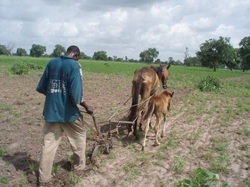 There are four main types of subsistence agriculture (Shifting Cultivation/Slash and burn, Pastoral Nomadism, Intensive Subsistence wet rice dominant, and Intensive Subsistence wet rice NOT dominant) which are found mainly in LDCs. Read HERE about Wet Rice Dominant Intensive Subsistence and read HERE about Wet Rice NOT Dominant Intensive Subsistence. |

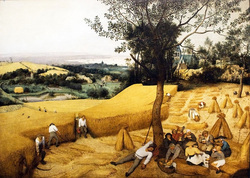
 RSS Feed
RSS Feed
